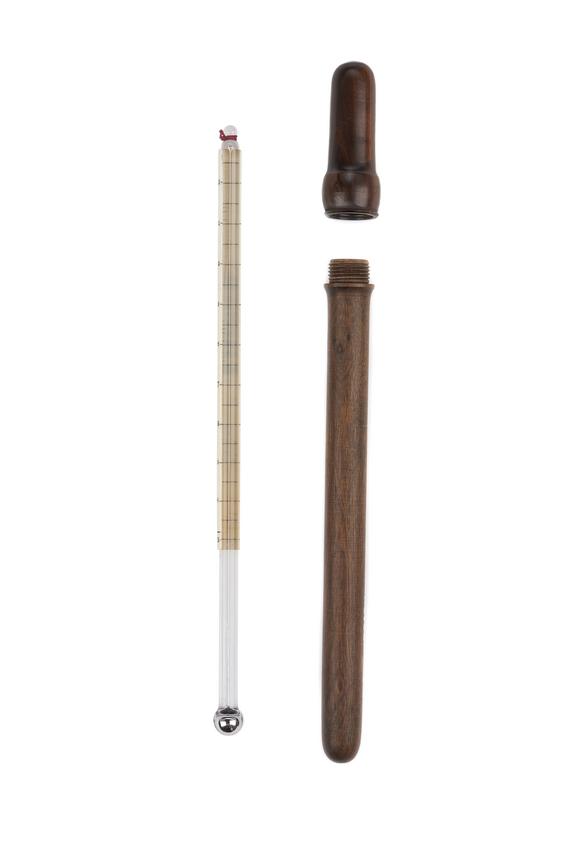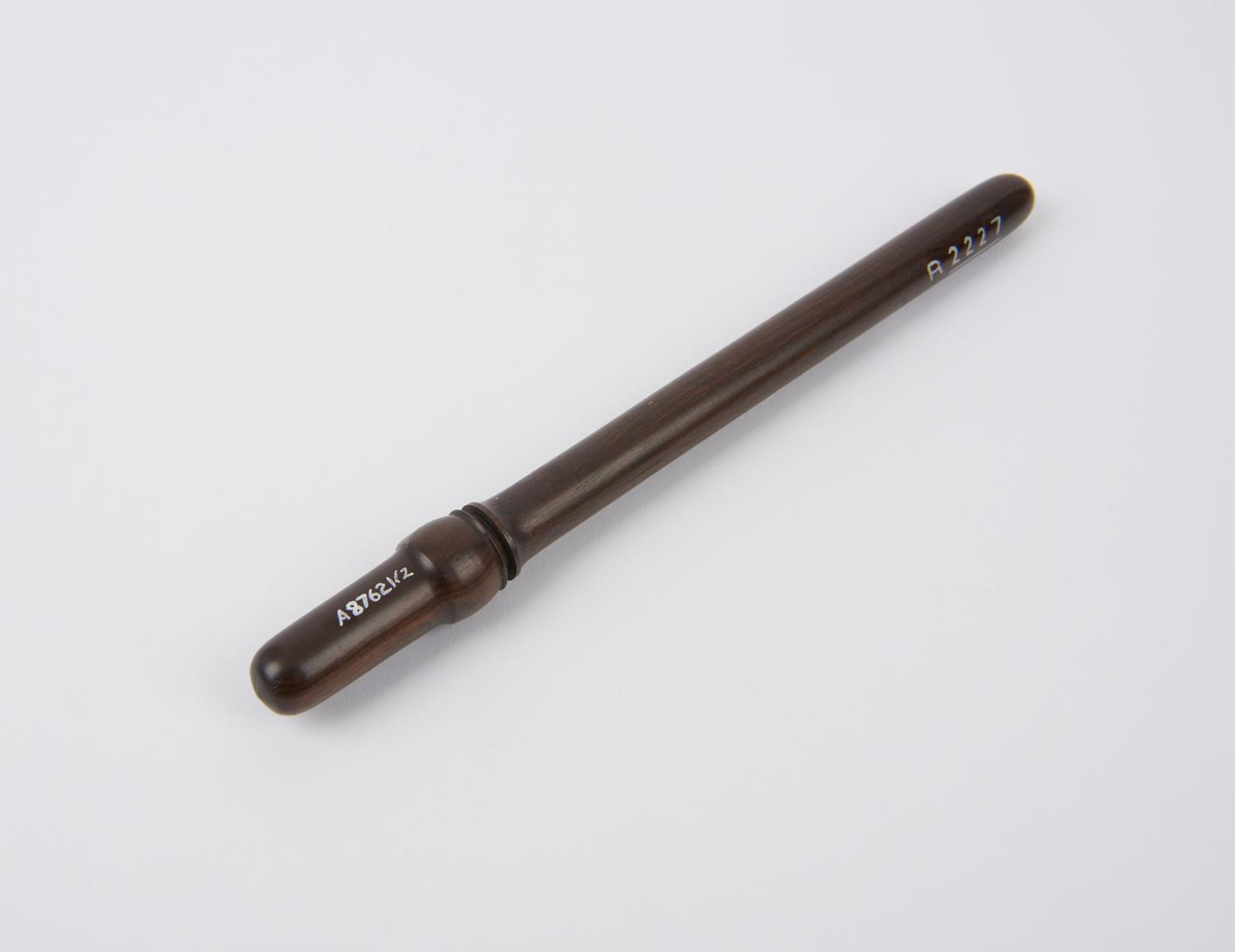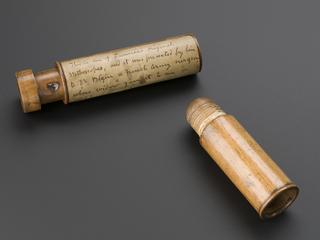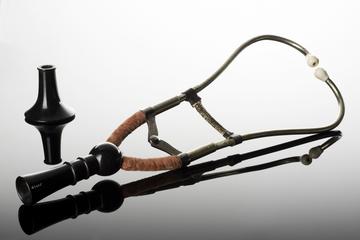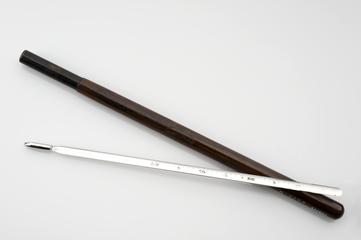Hunter type clinical thermometer
Clinical mercury thermometer, Fahrenheit, John Hunter's type, by William Cary, London c.1800
More
The clinical thermometer differs from an ordinary thermometer. It measures only over a limited temperature range relating to body temperatures. This early example is one of a type devised by Scottish anatomist and surgeon John Hunter (1728-1793).
Clinical thermometers were used in medicine for some time before 1850. However, it was only after that they began being used as precise instruments to diagnose disease. They were also used to predict a disease’s course through recognising the temperature patterns of specific diseases. This example has a Fahrenheit scale. It was made by optician and nautical instrument maker William Cary.


